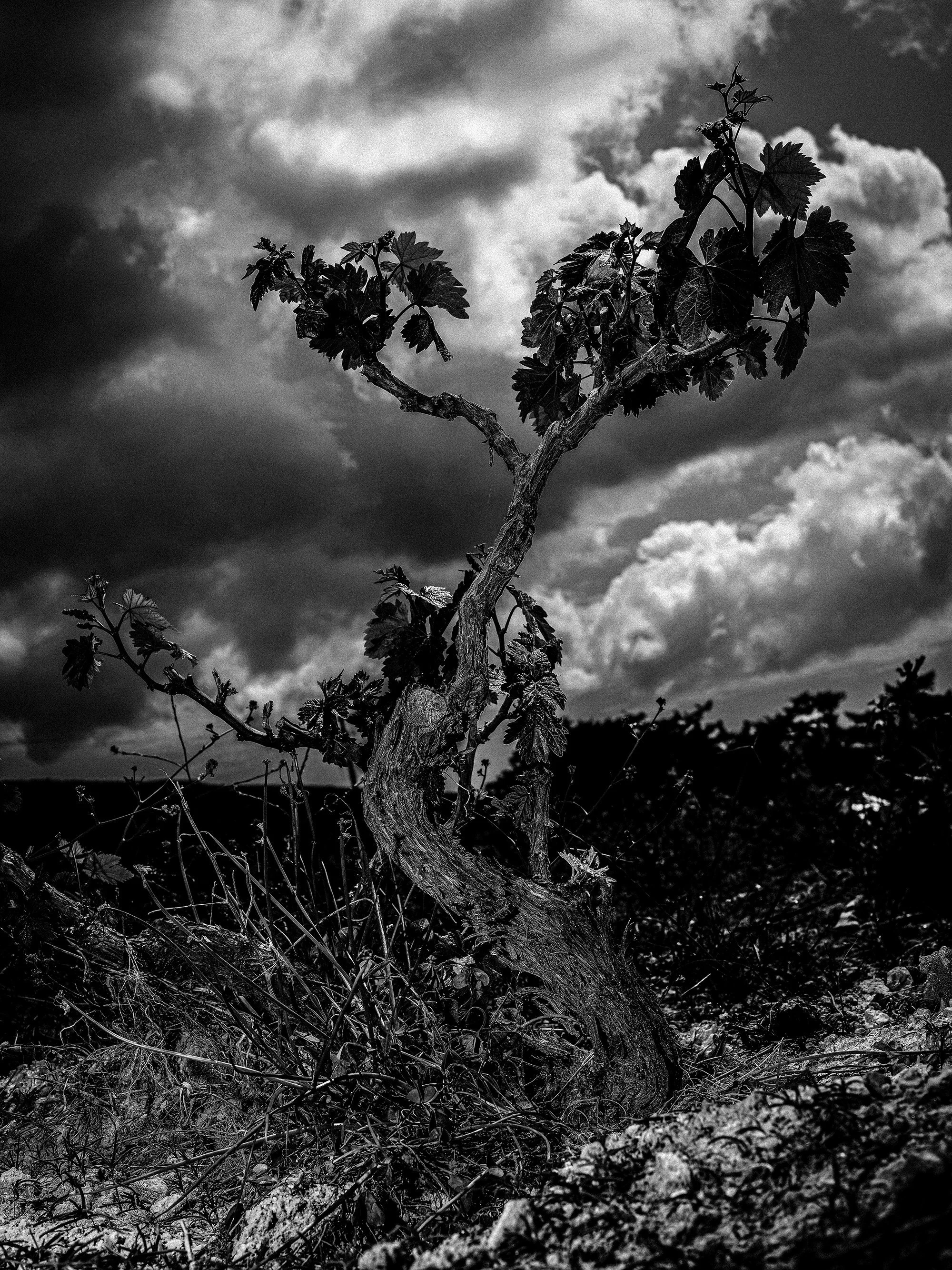WINESMITH’S VOICE
Some things are just meant to be, like winemaking in Paros. Yet, it's not just about planting grapes anywhere; it's about finding the perfect stage. Picture this: landscapes, parent rocks, microclimates, and the native grape varieties, all play their part in this symphony of ours, one that dates back thousands of years.
At P-F-C, we're on a quest to uncover Paros' authentic identity while respecting the harmony of nature. Our approach involves pure organic treatments, letting nature's allies tackle pests, and nurturing soil health with compost derived from our winemaking. We're all about building a robust ecosystem, with a fully developed microflora of organisms, ensuring our vines are rooted in Paros' essence.ITS GREAT GEOLOGICAL AGE AND THE PRIMITIVE CONNECTION OF PEOPLE WITH THEIR LAND CAN SHOWCASE HOW A TIMELESS, UNICORN WINE SHOULD BE
Paros is an incredibly diverse island, a compilation of distinct facets, each with its own soil texture and structure. We've classified it into three zones, each offering its unique maturation index and flavor profile. The sandy soils of coastal regions in the south bless us with fruity notes and refreshing acidity.
As we journey eastward, complexity unfolds with granites, basalts, gabbros, crafting wines characterized by structure and enduring length. For those who venture to the highest altitudes up to 400-450 meters, they'll encounter vines deeply rooted in limestone at the east side of the mountain and in red soils, rich in iron oxides content at its west side. These ancient, ungrafted vines on the terraces yield wines that encapsulate our original, untamed sense of place.DRAWING INSPIRATION FROM THE PAST, PAROS PROTECTED DESIGNATION OF ORIGIN IS MOVING FORWARD TO A ROBUST RESTATEMENT, WHICH TOTALLY UNFOLDS MONENVASSIA’S AND MANDILARIA’S VERSATILE QUALITIES
100% Monemvassia wines have a great range of flavors that can be intriguing to domestic and international consumers. Harvesting to a potential alcoholic degree around 12%, Monemvassia can offer cut grass, passion fruit and citrus fruits, while in 13 to 13,5% stone fruits and dried pineapple are dominant.On the other hand, red PDO PAROS is the only one in Greece that allows the co-vinification of red and white grapes. More precisely, it requires at least 35% of Mandilaria, which is acidic and at the same time with high phenolic concentrations. The presence of Monemvassia allows us to soften the compact volume and increase the complexity of the flavors. Depending on the potential alcoholic degree and the total time of skin maceration, Mandilaria can reveal a wide spectrum of aromatic characters, from cherries and cassis to tomato leaves and animalistic hints. HARVEST-WISE, WE’RE ALL ABOUT PRECISION. WE PICK THE FRUIT AT OUR IDEAL MOMENT, ENSURING THAT EVERY BOTTLE OF SEIRADI REFLECTS PAROS’ TERROIR FAITHFULLY. OUR WINEMAKING PROCESS IS A DELICATE TOUCH TO NATURE.
Vinification does not intervene to alter the true dimensions of the wines, but to support their balance. Selected wild yeasts take the lead, and we follow the principles of organic wine production for both SEIRADI trilogy and P-F-C LIMITED RELEASES. The trilogy is fruity driven and aim to consumer’s acquaintance with noble Monemvassia and vibrant Mandilaria. For this reason, plots for SEIRADI trilogy are fermented exclusively in stainless steel tanks. As for our Limited Cuvées, they're the heart and soul of our collection, and they're fermented partially in stainless steel tanks, clay amphoras, and cement egg-shaped tanks. Our goal? To create wines that age gracefully and vividly depict the story of Paros, the old, ungrafted vines and field blends.





